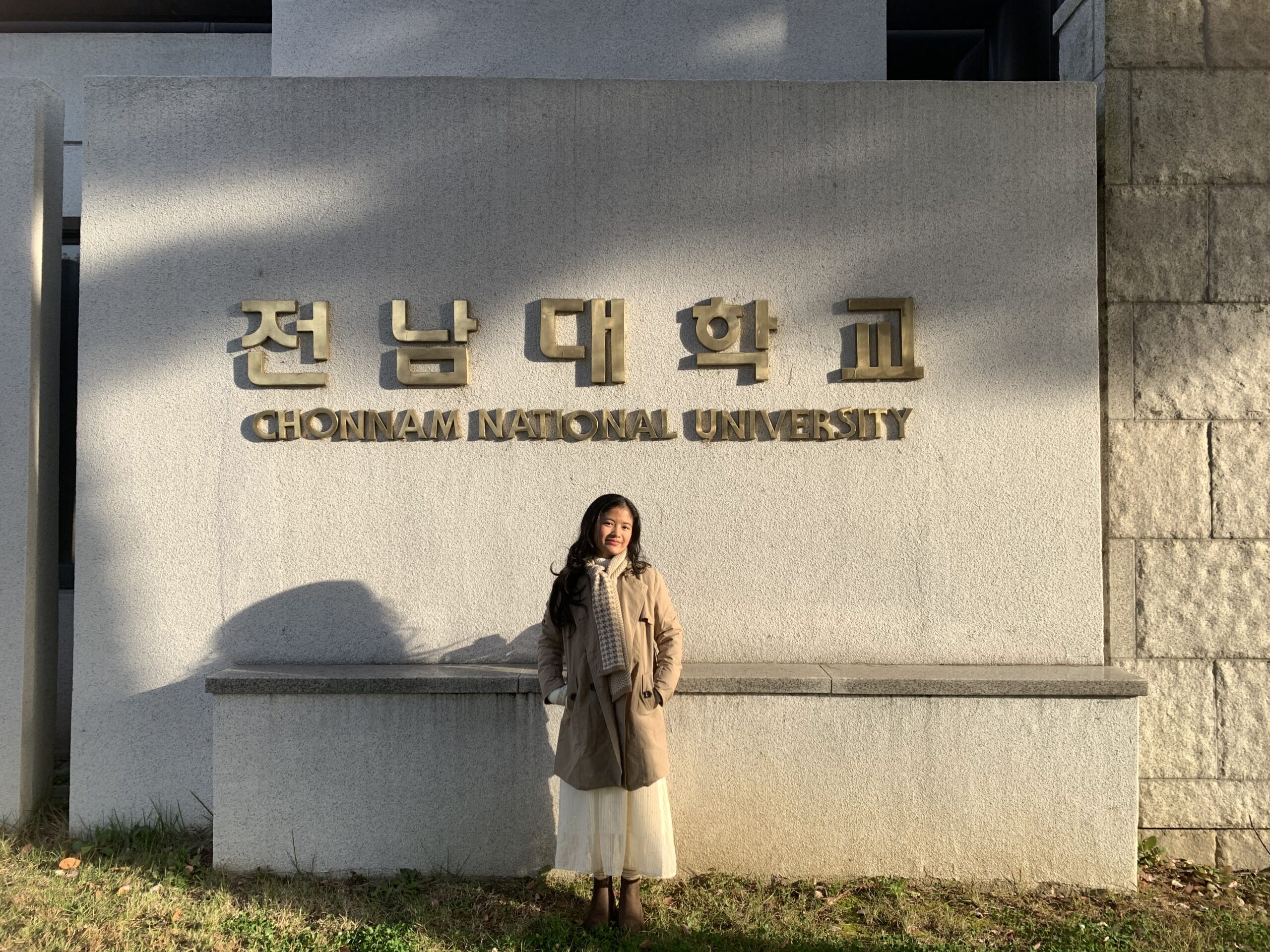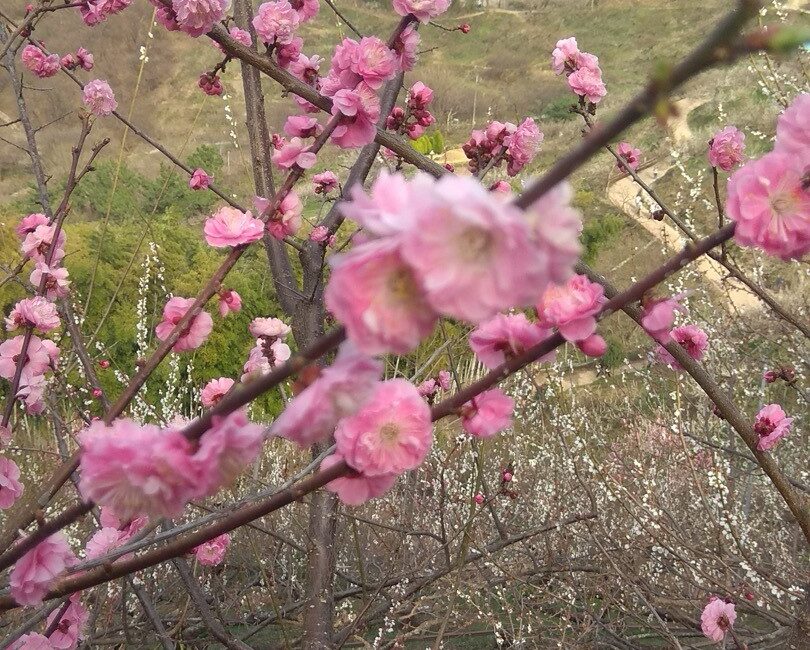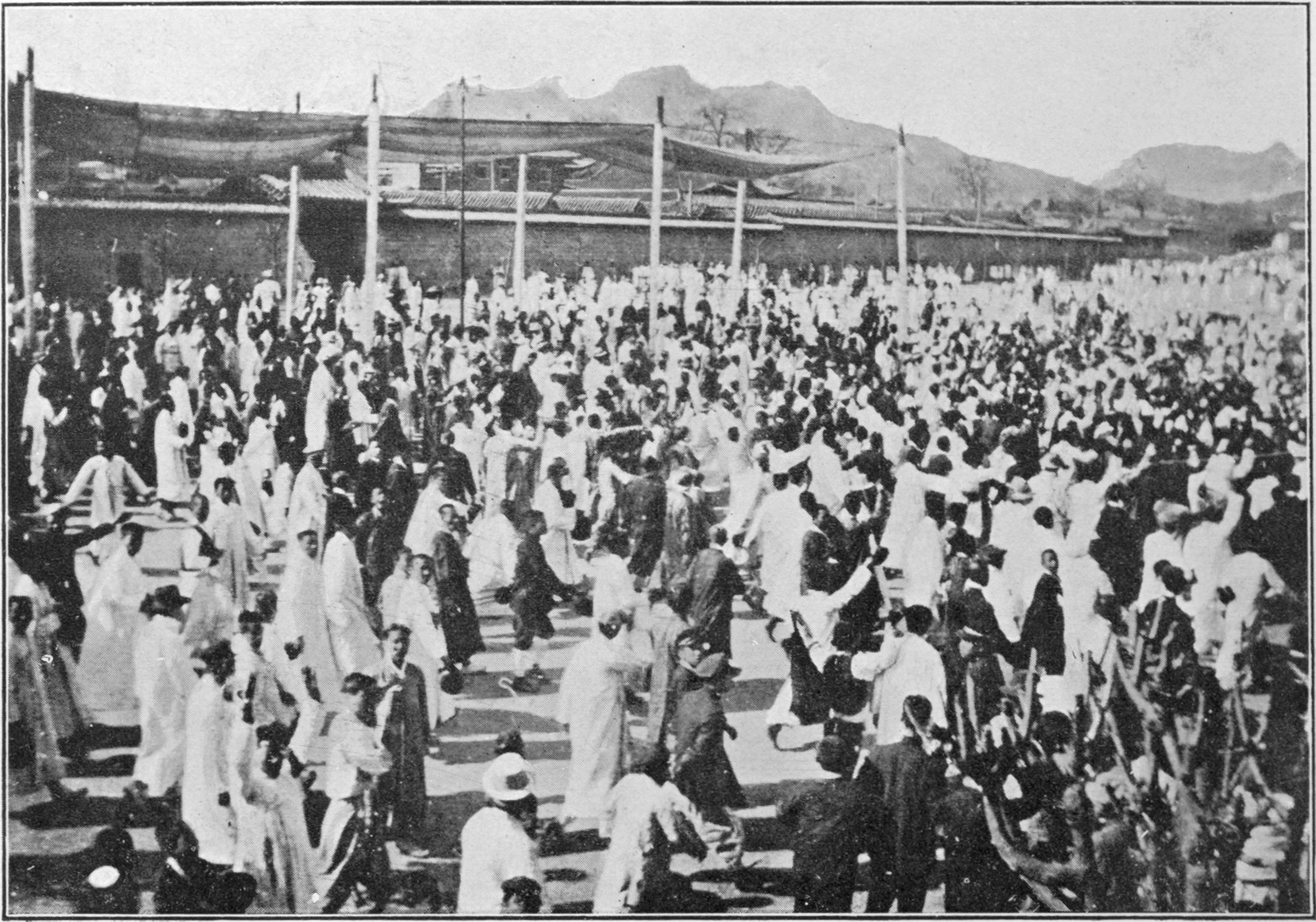The Nature of Emotions: Via Moosan, Huh Hwe-tae
By Dr. Tatiana Rosenstein.
Huh Hwe-tae (also known by his artistic name, Moosan, where moo means “exuberant” and san “mountain”) is a well-known Korean calligrapher and contemporary artist. Exploring Chinese calligraphy, Huh goes beyond traditional writing and rises to a new level of artistic expression by using new forms that he has invented. Over time, his work takes on more abstract forms, inspired by art and nature, created by man and without him. Focusing on emotions, moods, and a different state of mind, he departed from the fixed notion of the objects in calligraphic art, breaking away from the restraint imposed by them and exploring his own artistic freedom. In a way, he expresses himself by uniting his emotions with a brush.
In 2005, Huh Hwe-tae made his breakthrough transforming his two-dimensional calligraphic murals into three-dimensional art objects, some of which can be described as sculptures. However, we are not talking about traditional sculptures, although the artist creates his objects by modeling, adding material to canvas. This new form that merges calligraphy and painting is called “emography” (emotion + graphy), which transcends the boundary of the modern distinction between writing and drawing/painting. Huh complements the surfaces of his compositions with text and picture elements, producing works with paper that can be seen as “bas relief.” He uses traditional Korean hanji, twisting it into small forms that are covered with finely scribbled calligraphic signs. Hanji refers to paper handmade with mulberry bark that is thin and translucent, easy to press, starch, or fold when it is still not completely dry. It affords great freedom of creation. Huh describes his work process as follows:
“First, I write many words and sentences relevant to the theme I have in mind on a small piece of paper, then I wrap them around styrofoam divided into four pieces – the four cardinal points – with papers individually and manually glue them on a canvas one by one. This process looks to me like a process of creating the universe. At first, many tiny, meaningless pieces are integrated together to bloom. The manual process looks like I am planting the codes of emotions to seamlessly communicate with people.”
Immersed and formed in a specific socio-ethnic cultural layer, every artist creates work based on the experience of his social space for certain viewers, focusing on the cultural symbols and representations of society. To understand the art of Huh Hwe-tae and what shaped the artist’s views, it is necessary to place his work in historical context. An important milestone in changing the minds of Koreans was the year 1987, as it marked the activities of the resistance movement, whereupon the citizens of the Republic of Korea were finally able to achieve the establishment of democracy.
For national art, this meant the spread of pluralism, postmodern trends, and the opportunity to discover international art, preserving at the same time the originality of their own culture. The trends are reflected in new features like the desire for pure abstraction or emphasized expressiveness inspired by similar movements in Europe, particularly in France, where they are known as art informel. The influence of American art, in particular action painting, undoubtedly built on a heritage of the most prominent representative of the genre, Jackson Pollock, should not be underestimated as well. Protests against academic art came to Korea at the end of the 1960s. They were led by representatives of the informel movement. For example, there was the street display of avant-garde works on the walls of Gyeongbok Palace, while the exhibition of nominees for the National Art Exhibition was held nearby. According to the ideas of informel artists, the affectivity and spontaneity of art works are more important than their rationality.
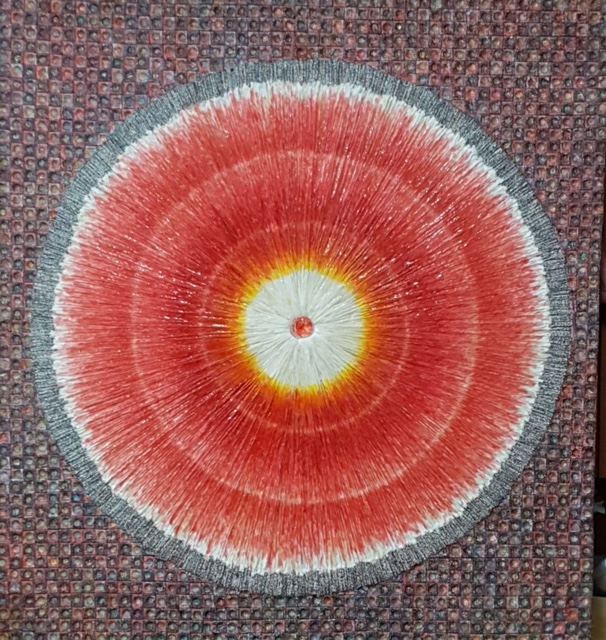
The largest experimental movement in Korean art, in the 1970s, was dansaekhwa (단색화), where style is characterized through monochrome painting and flatness. The style at first glance resembles the color field painting of Mark Rothko or Clyfford Still. Neither Korean nor American artists depict anything specific, but instead utilize monochrome color fields. By closely examining dansaekhwa paintings, one can see the surface, which is composed of numerous textures, including the repeated application and removal of smears. Representative dansaekhwa can be explained as removing paint from the canvas with repeated pencil strokes or scraping and then redoing parts of the paintings, using ideas from the ancient Eastern philosophical schools, in particular Buddhism, in which techniques were compared with the long and painful meditations of Buddhist monks. In the history of the Korean experimental art of the 1970s, we should mention associations like the Korea Avant-garde Group (AG) or the Fourth Group. Their representatives were looking to blur the boundaries between art and everyday life, paying particular attention to new ways of creative expression by freeing art from limited formats such as flat paintings and sculptures on a pedestal.
The confrontation between the avant-garde groups and conservative artists ended in a victory for the latter, which resulted in the emergence of schools like minjung (people’s) art in the 1980s. However, the avant-garde movements undoubtedly left traces in the history of Korean art that led to new experiments even by representatives of new conservative trends who tried to discover different forms of figurativeness. Perhaps the hyperrealism of the new direction can be compared to pop art in Western art; however, Korean artists were more interested in subjective emotions and symbolism. While Western paintings were keen on transmitting the cult of modern society, Korean paintings turned mostly to nature, devoid of human figures as if they intended to metaphorically indicate the existence of people, instead of cultivating their presence as artists in the West often preferred. In the 1990s, the era of globalization of Korean contemporary art began. The artists started to travel abroad more often, sometimes undergoing training there.
Huh Hwe-tae was born in 1957, at a time when protests against academism in Korean art began. Perhaps he chose a more secure path by studying calligraphy rather than art. According to the artist himself, he was just too keen on calligraphy. He created his first works at the age of only five. Known as a child prodigy, he collected his first awards in calligraphy contests at the age of 15. His first solo exhibition was organized while he was still attending high school. When the globalization of contemporary Korean art emerged internationally and the local art scene was opening up to the pluralism of opinions and joys of experimentation, Huh was in his late 30s. Towards the mid-1990s, he had mastered all the styles known in calligraphy. The time finally came when he wanted to create something new:
“During that time, I was thinking of the legendary calligrapher of the Joseon Dynasty Kim Jeong-hui and his Chusa style. I thought there was no way I could surpass him with the existing styles, no matter how well I imitated him. I needed to start something new that was demanded in my time. I focused on the fact that most letters are considered as nothing more than just letters used within certain countries. They could not be communicated globally. So, I tried to capture imagery in letters that would go global.”
Huh’s new form of art is a mix of calligraphy, painting, and sculpture. It was influenced equally by nature and by human beings. Engaged with emotions and intuition, he adopted one form of human communication – language – by transforming it into another one based on the universal instincts of people, their thoughts, and feelings. He discovers eroticism rooted in the human desire of existing and making things exist. He searches for temptation and naturalness that is not governed by ideas, thoughts or ethics. In his “emosculptures” (emotion + sculpture), we sense the icons of the vulva as a universal source of life and creation, desire, pain, and pleasure. His early work is mostly monochrome. This choice could be an influence from calligraphy. However, restraint in colors was also inherent in the work of many Korean artists in the 1970s and early 1980s. Like them, Huh was also inspired by Eastern philosophy and Buddhism, exploring cycles of birth and rebirth, the concepts of reincarnation and transmigration. Sometimes the similarities of styles are not resulting from direct influence; the artist’s views are rather shaped by the zeitgeist.
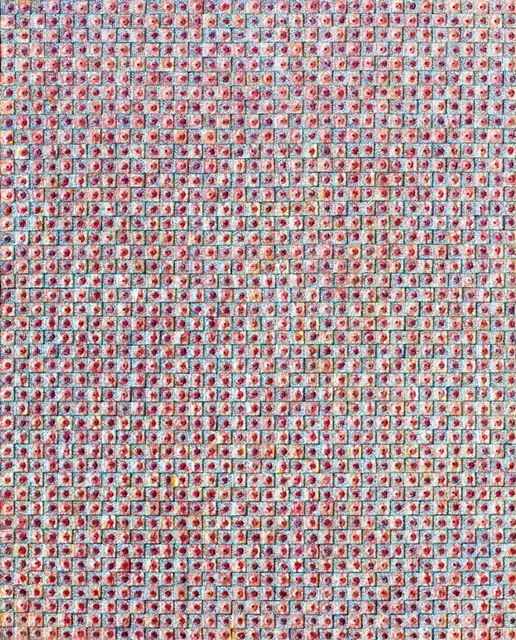
I first visited the artist’s studio on my third trip to Korea. In Seoul’s Gangnam District, a cozy space filled with brushes and paper samples, books, heavy catalogues, and graphic work, in addition to paintings, sculptures, and “emographic” (emotion + graphic) pieces. Everything felt to be in order, harmonious, and simplistic. The artist was preparing for a new exhibition, selecting works and pondering concepts.
My attention was drawn to a canvas. Its surface was divided into three equal parts covered by the colors blue, red, and yellow (according to the artist, yellow stands for “belief,” red for “passion,” and blue for “peace and stability”). It looked abstract, living in its own reality. It recalled similarities with the art performed by minimalists in a highly purified form of beauty. Stepping closer, I saw how the colors were blurring towards the edges while surfaces appeared to be moving and swirling like a whirlpool. The centers of those whirls were shifted sometimes to the right and sometimes down, building a rhythmic vortex of spaces, lines, and masses. Upon even closer inspection, I suddenly noticed that parts of the canvas were composed of tiny volumes hand-scripted by the artist. Countless reliefs – a painstaking, miniature work like handcrafted jewelry – together created a huge network. In their multiple layers and semantic diversity, they nevertheless created absolute harmony. From here on, the object still appeared abstract but becoming more conceptual. I was told the title of the series was “The Flower of Life.” The name was an art narrative within itself – now, in these abstract forms, I could imagine flowers or diverse elements of nature. The numerous lines depicting different shapes and surfaces seemed to form a third dimension. The viewer did not feel bored to peer into this endless universe, the riddle of which seemed solvable at the same minute when it immediately disappeared from view, creating new semantic interpretations.
In a piece I saw next was a lot of indigo resembling a water surface with stains as if left from a boat that had just sailed here. Some of the canvases were more monochrome, like the one with the title “The Echo of the Heart, No. 5.” Another, with a similar composition but made in a more colorful combination, reminded me not only of blooming flowers but of the glowing sun or even a wheel of all life. These works could rightfully be called sculptures, because everything down to the smallest details was molded by the artist’s hands. The artist explains what was depicted:
“I wanted to draw attention to particles that rush towards the center, which are marked with a gem placed in the middle, emitting intense light reflected in a homogenous space. This center becomes a symbolic heart of a person reflecting actions and feelings of its owner. It contains thoughts about me, nature, and myself in the space. The beginning of every work is a story of the universe where people build their ideas, expressing desires, giving and taking, asking and receiving answers. I wanted to create pieces that spread energy and feel like the breath of life.”
Some of the objects included in the upcoming show I could only see in pictures, like the installation “Emergency, Non-emergency.” Several outlandish, free-standing forms placed one by another reminded me of human figures multiplying and constantly increasing into crowds. The forms had floral motifs including also diverse symbols like female body parts, outlines of a baby, and the conventional process of life creation.
Huh Hwe-tae’s new works are complex. They contain several styles that I can recognize in both contemporary Korean as well as Western art. The traditions of monochrome and flatness seen in avant-garde Korean art of the 1970s can be clearly traced here as well, with tendencies toward action painting – especially by recalling numerous artists’ performances with brush and ink – or toward conceptual art, where the whole work is subject to one idea. Focus on emotions is a legacy of abstract expressionism. Art has become a global phenomenon. The diversity of Huh’s art and his numerous experiments speak to his curiosity and tireless joy in researching life. Maybe historians and art critics are driven by a desire to explain art. They strive for an accurate analysis of works of art in order to organize it. A regular viewer is not required to do so because art can also be reflected by using the nature of emotions. This is precisely what Huh Hwe-tae hopes to achieve, namely, that a perception may unexpectedly lead to infinite imaginations and touch people’s hearts.
The Author
Dr. Tatiana Rosenstein teaches art history with a focus on contemporary art. She is a film scholar who has been reporting on international film festivals, design and fashion events as well as major art events for German-speaking and foreign media since 1999 and is active on juries of critics. Her post-graduate research advisor was Prof. Rainer Crone, who is known for discovering Andy Warhol and publishing his first catalogue. She writes articles in several languages, with her work appearing in publications from Europe and Russia to China and Korea. Email: info@kino-kunst.de



